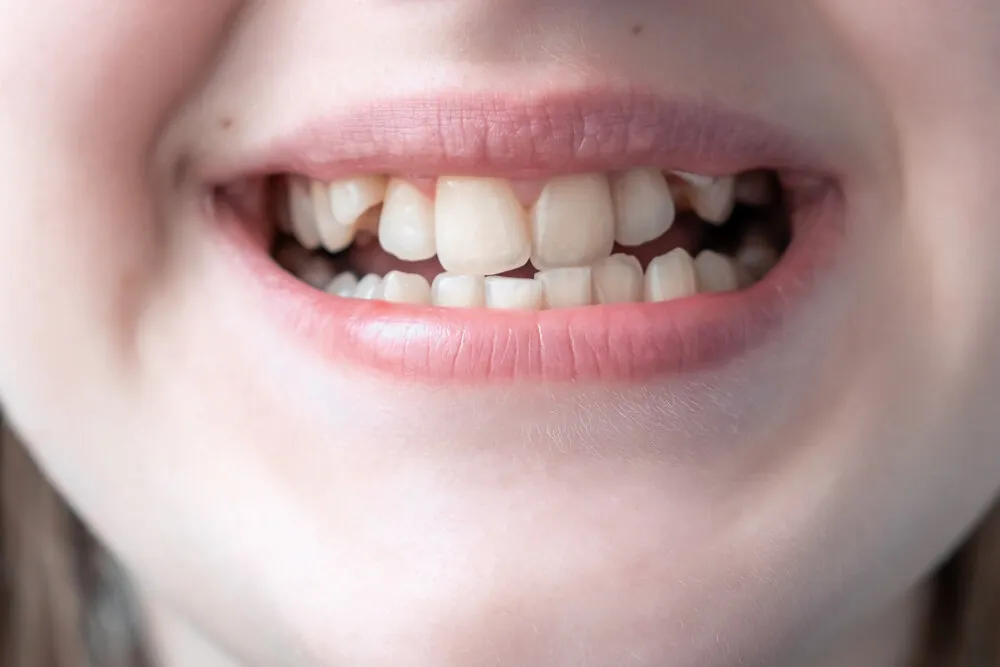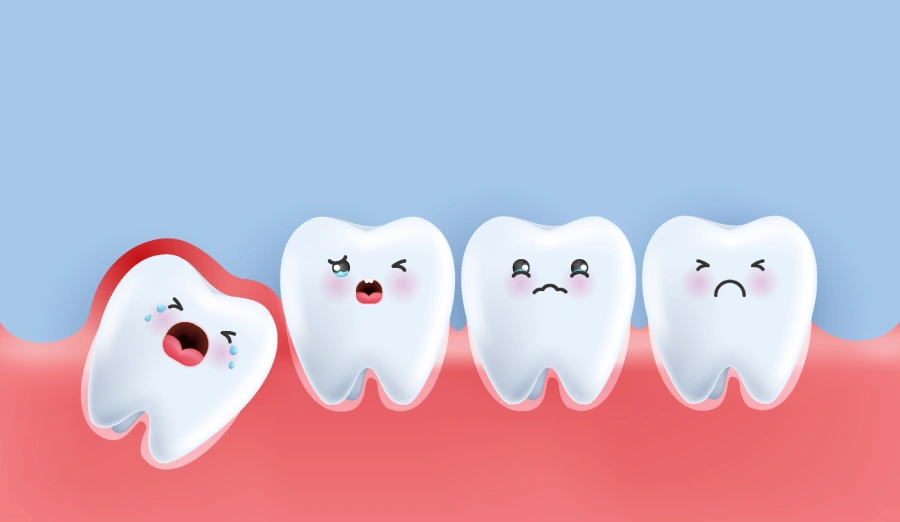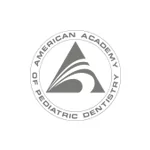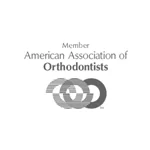
Crooked teeth. Crowding. Jaw misalignment. Oh my!
These are just some of the clues that you or your child might benefit from dental braces.
Let’s go through the most common signs that a person might need braces, both as a child and as an adult, together.
Does My Child Need Braces?
Wondering if it’s high time you took your little one to see an orthodontist? There are a couple of ways you could look at this question.
At What Age Should Kids Get Braces?
The American Academy of Orthodontists (AAO) recommends children visit an orthodontist for the first time no later than age 7. In case you’re wondering why, this is because, by this age, a child generally has enough permanent teeth for orthodontists to know whether an orthodontic problem either exists now or is in the process of developing.
12 Common Signs Your Child May Need Braces
Having a general understanding of the age at which your child might benefit from visiting the orthodontist for the first time is helpful. But as we explain in our blog post “What is the Best Age for Kids to Get Braces?”, so is developing an understanding of the signs that braces are warranted. Here are twelve of the most common:
- Early or Late Loss of Baby Teeth: Baby teeth act as placeholders for adult teeth. Losing them too early or too late can disrupt the eruption pattern of permanent teeth, leading to crowding or misalignment. Braces can help guide adult teeth into their proper positions.
- Trouble Chewing or Biting: Improper jaw alignment or misaligned teeth can make chewing difficult and uncomfortable. Braces can correct these issues, leading to improved chewing efficiency and better digestion.
- Mouth Breathing: Chronic mouth breathing can be a sign of airway obstruction due to a narrow jaw or crowded teeth. Braces can help widen the jaw and create space for proper tongue positioning, encouraging nasal breathing and improving overall health.
- Finger Sucking or Other Poor Oral Habits: Persistent habits like finger sucking or thumb sucking can push teeth out of alignment. Early intervention with braces can help prevent these habits from causing lasting damage.
- Crowding, Misplaced, or Blocked-Out Teeth: When there’s not enough space for all your teeth to erupt properly, they can become crowded, misaligned, or even trapped beneath the gum line. Braces can create space and guide teeth into their correct positions.
- Jaws that Make Sounds, Shift, Protrude, or are Recessed: Clicking, popping, or grinding sounds in the jaw joint can be signs of a misaligned bite. Braces can correct jaw discrepancies and improve joint function. Similarly, protruding or recessed jaws can be addressed with braces to create a more balanced facial profile.
- Difficulty Speaking: Speech impediments like lisps or difficulty pronouncing certain sounds can sometimes be caused by misaligned teeth or jaw positions. Braces can improve speech clarity by correcting these issues.
- Cheek Biting or Biting into the Roof of the Mouth: This repetitive behavior can be a sign of an overcrowded mouth or misaligned bite. Braces can address these issues, eliminating the need for this coping mechanism.
- Protruding Teeth (Upper or Lower): Teeth that stick out are more prone to damage and can affect your facial profile. Braces can retract these teeth for a more balanced smile.
- Teeth that Fail to Meet Normally or at All: An improper bite can cause uneven wear and tear on teeth. Braces can correct bite problems, ensuring your teeth meet properly for optimal function.
- Facial Imbalance or Asymmetry: Sometimes, misaligned teeth or jaws can lead to facial asymmetry. Braces can help achieve a more balanced and aesthetically pleasing facial profile.
- Teeth Grinding or Clenching: While not always caused by misalignment, grinding or clenching can be related to bite issues. Braces can help correct underlying bite problems that might contribute to this habit.
Do I Need Adult Braces? 5 Signs it Might Be Time
There used to be a mentality among certain adults that if you didn’t get braces as a child, getting them as an adult would be pointless and inconvenient (or maybe even a marker of unnecessary vanity).
Luckily, attitudes have long since changed. Perhaps this is due to the ever-expanding types of braces now available, such as clear aligners. Or maybe it’s just due to increasing awareness surrounding the importance of oral health and the respect for various reasons an adult might get braces, from the desire to have an improved smile to the need to eradicate chronic jaw pain.
Regardless, here are five of the top signs how to know if you need braces as an adult:
- Gradual Teeth Movement: Teeth may shift due to age, bone loss, or injury, and this gradual movement could cause the teeth to become crooked and overcrowded.
- Jaw Pain: Teeth problems may lead to jaw pain and other physical issues.
- Difficulty Cleaning the Teeth: As the teeth shift, it may become exceedingly difficult to clean the teeth properly, increasing the risk of cavities, tooth decay, and other oral health problems.
- Past Treatment Wears Off: An adult who had braces as a child may consider it once again to straighten teeth that have shifted over time.
- Enhanced Smile: Adult orthodontics treatments provide a viable option to deliver a healthy smile with as little treatment time as possible.
How to Maintain Good Oral Health With Braces
One valid concern many adults have when weighing the pros and cons of braces on behalf of themselves or their children is how to keep a mouth with braces healthy and clean.
This used to be more of an issue years ago than it is today. While you can make adjustments to your routine using existing dental products, today, there are entire mouthcare systems designed specifically to work with braces.
Want to learn more? Explore the science behind superior oral care with or without braces now at Supermouth.com!









